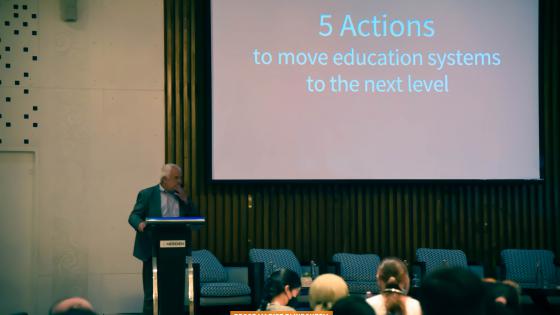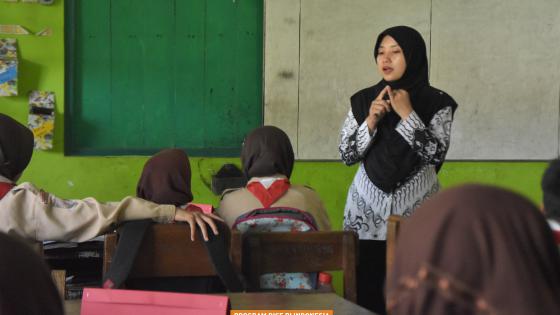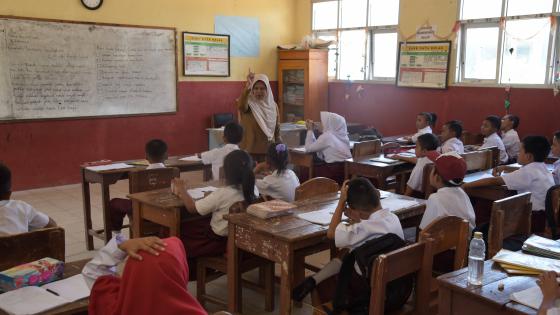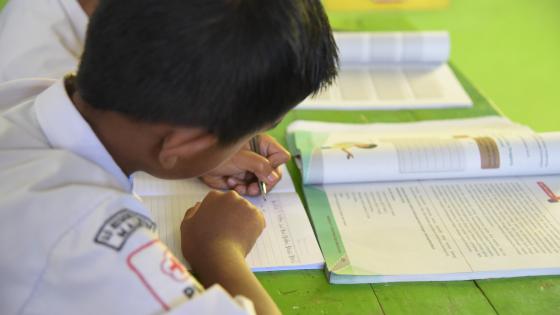Photo illustration: Novita Eka Syaputri
.
This article was originally posted on The Conversation Indonesia.
.
Indonesia is predicted to reach the height of its demographic dividend period between 2030 and 2040, when the share of the country’s productive age population (aged 15–64) will be greater than the non-productive age population (children and the elderly).
By 2035, the population of productive age will reach 64% of the total population of 297 million.
But the ineffective learning from home during the COVID-19 pandemic can erase opportunities to benefit from the dividend. Students who are now learning from home will enter the workforce around 2035.
Yet, a 2020 research by The SMERU Research Institute noted that the learning from home activities in Indonesia faced many obstacles, from unequal access to online learning facilities to teachers’ unequal skills.
These hurdles widen student inequality in Indonesia—with more severe learning losses hitting the underprivileged students—thus exacerbating the existing poor worker competence problems.
How can those hurdles affect Indonesia’s golden employment opportunities in the future, and what should be done to anticipate the effect?
Before the pandemic, workers’ education quality was already low
To take advantage of the demographic dividend, the abundant population of productive age, Indonesia must ensure that their education and skills are excellent, including their readiness for the competitive global labour market.
However, in terms of labour, Indonesia still faces two major challenges related to the quality of education and competence of workers since before the enactment of learning from home due to the pandemic.
First, about 59% of the workforce are junior secondary school graduates—most even graduate from lower education levels.
These graduates’ learning outcomes—during in person schooling—were sluggish.
A study by the Research on Improving Systems of Education Programme (RISE Programme-SMERU) in 2018 reported that most secondary school graduates had not mastered simple numeracy skills that they should have learned in primary school.
Second, the education and skills obtained by prospective workers while at school do not match the demands and minimum competencies. As a result, it is difficult for the job market to find the required workers.
The Demographic Institute of the University of Indonesia, who processed the 2015 National Labour Force Survey (Sakernas), noted, for example, a mismatch of workers’ education levels (‘vertical mismatch’), which was 53% of the entire workforce.
This means that many workers have lower education levels than what their workplace requires.
Most workers also experience a ‘horizontal mismatch’. In this case, in addition to their education levels, as many as 61% of workers have the types of education, competencies, or training that do not match the needs of their workplace needs.
Aggravated learning outcomes will further threaten the demographic dividend
The two mentioned problems can be exacerbated by ineffective learning from home due to the pandemic.
A study from the World Bank, for example, estimates ineffective learning from home in Indonesia results in learning loss among Indonesian students.
This impact is even more severe for children from underprivileged families. Even four months of inadequate learning from home will further widen the learning outcomes of the underprivileged students (who had already fallen behind) with their more fortunate peers—from being 1.4 years behind to 1.6 years behind in the learning process.
Students from families with the most vulnerable economic conditions even face the risks of child marriage and dropping out of school.
Lower education attainment and declining learning outcomes will lead to lower productivity and competitiveness in the future.
Students adversely affected by the ineffective learning from home, for example, are expected to enter the workforce in the 2030s—just at the height of the demographic dividend.
Whereas, researchers predict that in the future, 65% of the existing work will be replaced by new unimaginable types of work that require a variety of competencies much more complex than today.
Unless our learning system immediately finds a fast way to improve its quality, most of the population expected to be part of the demographic dividend will be marginalised in the modern and formal world of work.
Indonesian workers can become a “burden” as second-class citizens in their own country in the future.
Educational policies at the local level is the key
Since the implementation of decentralisation and regional autonomy policies two decades ago, the administration of primary and secondary education fall under the authority of local governments.
This means that local educational apparatus and institutions throughout Indonesia are responsible for improving the quality of education.
In the short term, local governments must be able to guide schools to gradually reopen in-person learning—indeed by taking into account factors in the spread of COVID-19, the vulnerability of students, and the readiness of health facilities in the area.
Once schools reopen, they should also focus on recovering learning losses due to the pandemic, especially on underprivileged students.
In the long term, local governments must improve policies that have yet been ineffective.
In 2018, the RISE Programme-SMERU found that only 62 out of 508—or roughly 12%—of districts in Indonesia had innovative education policies.
In general, our researchers found that local education policies have not been effective in improving learning outcomes.
Numerous teacher training policies, for example, do not correlate with junior secondary school exit exam scores in each district.
This means that there is still a big gap between the education needs in the districts and the policies issued, and more research and studies are needed to find alternative solutions at the regional level before it is too late.
One thing is evident: given the low quality of existing learning outcomes, education officials in ministries, local education agencies, and schools, from ministers to teachers, have no other choice than to work harder and carry out massive evaluations of various education policies that have been implemented.
If this is ignored, Indonesia’s demographic dividend will have little meaning. Rather than being an advantage, they can become a heavy burden for the nation.









